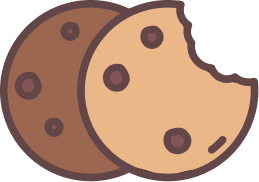#TakeCharge with #Aimshala
How make a career in Textile Design Director
A career as a Textile Design Director involves leading the creative direction of textile design projects, overseeing the development of fabric patterns, colors, and textures. Individuals interested in this career typically need a strong academic background in textile design, fashion design, or a related field. A bachelor's degree is essential, with many professionals pursuing master's degrees for advanced knowledge and leadership skills. Gaining practical experience through internships, design competitions, or working in textile companies is vital. Networking within the fashion and textile industries and staying updated on trends and technologies are also crucial. With a blend of education, experience, and creativity, one can build a rewarding career in textile design.
Career in Textile Design Director
What are the roles and responsibilities in Textile Design Director?
- Leading Design Projects : Textile Design Directors oversee the creative process of textile design projects from concept to completion, ensuring alignment with brand vision.
- Collaboration with Teams : They collaborate with designers, product developers, and marketing teams to create cohesive collections that meet market demands.
- Trend Analysis : Textile Design Directors analyze market trends and consumer preferences to inform design decisions and innovative fabric development.
- Quality Control : They ensure that the final products meet quality standards and specifications, overseeing testing and approval processes.
- Budget Management : Textile Design Directors manage project budgets, ensuring that resources are allocated efficiently and effectively.
What education is required to study Textile Design Director
Check out the dates of the total number of candidates who have appeared in the CUET 2022 exam from the below table.
Stream |
Graduation |
After Graduation |
After Post Graduation |
|
|
Path 1 |
Completion of high school with a focus on art, design, and textiles. |
Bachelor of Arts in Textile Design or Fashion Design. |
Master's degree in Textile Design, Fashion Management, or a related field. |
Certifications in textile technology or design software. |
|
Path 2 |
Completion of high school with emphasis on art and design. |
Bachelor's degree in Fashion Merchandising or Textile Engineering. |
Master's degree in Fashion Design or Textile Science. |
Professional certifications in design software or textile sustainability. |

Feeling unsure about
your future?
Let's find the perfect career path for you!
with AI-powered career
guidance

What are the key skills required for Textile Design Director
- Creative Skills - Essential for developing innovative designs and concepts that resonate with consumers.
- Technical Skills - Proficiency in design software and textile production processes is crucial for executing design ideas.
- Project Management Skills - Ability to manage multiple projects simultaneously, including budgeting and timelines, is vital for success.
- Communication Skills - Strong communication is necessary for effectively conveying design concepts to teams and clients.
- Market Awareness - Understanding current fashion trends and consumer behavior helps in making informed design decisions.
What are the career opportunities in Textile Design Director?
- Textile Designer - Textile Designers create patterns and designs for fabrics used in fashion and interior design.
- Fashion Designer - Fashion Designers develop clothing and accessory collections, incorporating textiles and trends into their work.
- Fabric Technologist - Fabric Technologists focus on the development and testing of textile materials for performance and quality.
- Product Development Manager - Product Development Managers oversee the process of bringing textile products from concept to market.
- Textile Merchandiser - Textile Merchandisers work on the commercial side of textiles, managing product lines and sales strategies.
What is the salary and demand for Textile Design Director?
- Salary Overview - The typical salary for Textile Design Directors ranges from $60,000 for entry-level positions to over $120,000 for experienced professionals, with variations based on education and location.
- Regional Salary Variations - Salaries can vary significantly by region; for example, Textile Design Directors in major fashion hubs may earn more than those in less populated areas.
- Current Job Market Demand - The demand for Textile Design Directors is increasing due to the growth of the fashion industry and the need for innovative textile solutions.
- Future Demand Projections - Future demand for Textile Design Directors is expected to rise as sustainability trends and technological advancements shape the industry.
Leading companies for careers in Textile Design Director

Nike

Adidas

H&M

Zara

Levi Strauss & Co.

Lululemon

Textile Exchange

Kravet Inc.
What are the best colleges for Textile Design Director in India?
Undergraduate
College |
Location |
Website |
|
National Institute of Fashion Technology (NIFT) |
New Delhi |
https://www.nift.ac.in |
|
Pearl Academy |
Delhi |
https://www.pearlacademy.com |
|
L. S. Raheja School of Art |
Mumbai |
https://www.lsrahejaschoolofart.com |
|
Srishti Manipal Institute of Art, Design and Technology |
Bengaluru |
https://www.srishti.ac.in |
|
MIT Institute of Design |
Pune |
https://www.mitid.edu.in |
Postgraduate
College |
Location |
Website |
|
National Institute of Fashion Technology (NIFT) |
New Delhi |
https://www.nift.ac.in |
|
Pearl Academy |
Delhi |
https://www.pearlacademy.com |
|
Indian Institute of Technology (IIT) Delhi |
New Delhi |
https://www.iitd.ac.in |
|
National Institute of Design (NID) |
Ahmedabad |
https://www.nid.edu |
|
Srishti Manipal Institute of Art, Design and Technology |
Bengaluru |
https://www.srishti.ac.in |
What are the best colleges for Textile Design Director in Abroad?
College |
Location |
Website |
|
Fashion Institute of Technology (SUNY) |
New York, USA |
https://www.fitnyc.edu |
|
Central Saint Martins |
London, United Kingdom |
https://www.arts.ac.uk/colleges/central-saint-martins |
|
Royal College of Art |
London, United Kingdom |
https://www.rca.ac.uk |
|
Rhode Island School of Design (RISD) |
Providence, Rhode Island, USA |
https://www.risd.edu |
|
Parsons School of Design |
New York, USA |
https://www.newschool.edu/parsons |
What are the top entrance exams in India for pursuing a career in Textile Design Director
College |
Tentative Date |
UG/PG |
Important Elements |
Website |
|
National Institute of Fashion Technology (NIFT) |
January |
UG/PG |
General Knowledge, Design Aptitude, and Communication Skills. |
https://www.nift.ac.in |
|
Pearl Academy |
April |
UG/PG |
Creative Ability Test, General Knowledge, and English. |
https://www.pearlacademy.com |
|
National Institute of Design (NID) |
February |
UG/PG |
Design Aptitude Test and Portfolio Review. |
https://www.nid.edu |
|
Srishti Manipal Institute of Art, Design and Technology |
March |
UG/PG |
Creative Skills, General Knowledge, and Design Aptitude. |
https://www.srishti.ac.in |
|
Indian Institute of Technology (IIT) Delhi |
May |
Postgraduate |
Design Aptitude Test and Interview. |
https://www.iitd.ac.in |
Pros & Cons of a Career in Textile Design Director
Pros
- Textile Design Directors have the opportunity to influence trends and create innovative designs that shape the industry.
- The role offers competitive salaries, especially for those with advanced degrees and extensive experience.
- Professionals in this field contribute to sustainability efforts by developing eco-friendly textile solutions.
- There are opportunities for career advancement and continuous learning within a dynamic industry.
Cons
- The job can be demanding with tight deadlines, especially during product launch seasons.
- Some roles may require extensive travel to textile mills or trade shows, which can be tiring.
- The industry can be highly competitive, making job security challenging at times.
- Long hours may be required, particularly during peak project phases or when working on multiple collections.
Did you find this information helpful?


Report
0 out of 0 found this helpful


